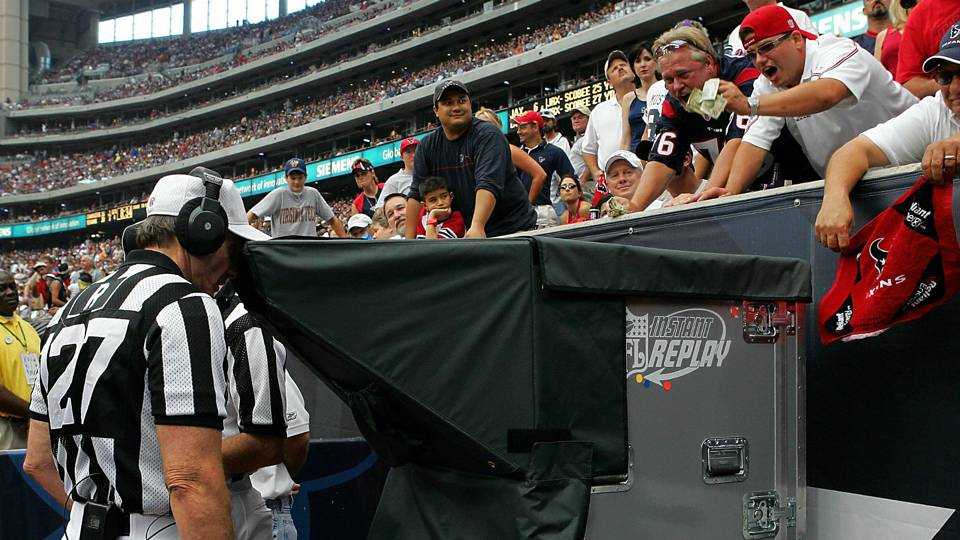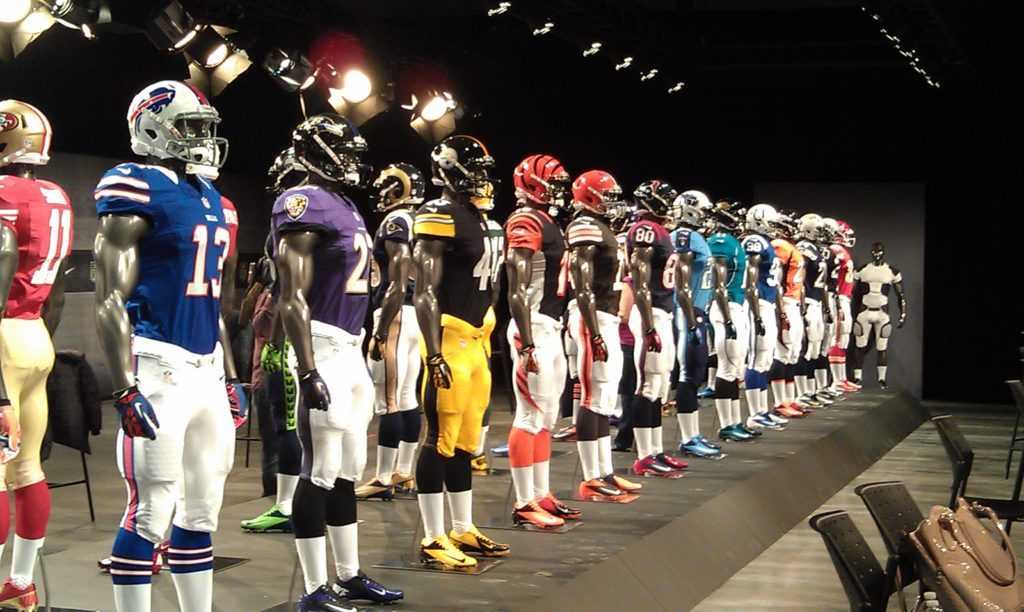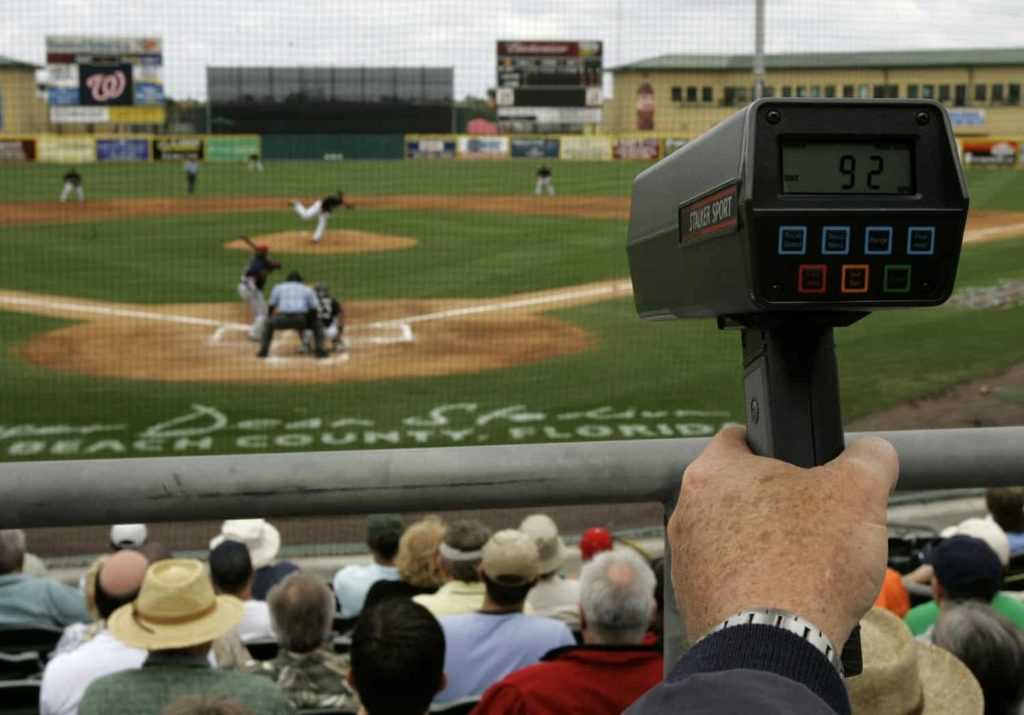Throughout the past 200 years, technology and technological advancements in the sporting world has been prevalent. Within sports, technology has improved the accuracy, enjoyment and experience of both the athletes and spectators at sporting events across the United States and in the world. The key advancements in technology in the past, the present and the future have contributed to making the sport better for everyone. From the fans, to the coaches, to the referees, to the umpires to even the players, technology has evolved and so have our American pastimes and cultural beloved sports.
Sieko Electronic Automated Timing System (Photo Finish)
Looking at a brief history of technology in sports we can see the technological implementations from early on in the late 1800’s when photo finishing was implemented in horse racing. While this was a bit ahead of it’s time in the late 19th century, photo finishing really introduced the new wave of technology in sports and how tech could help evolve sports. In a whole sense of “Athletics” we can see technology was implemented in physical, individual athletics as early as 1920’s but we really saw a grasp of cultural implementation start in the 1960’s when automated timing systems with photo finish mechanism’s were implemented into track and field. We then saw this evolve in the late 1980’s as some companies were designing frequency chips to be implanted into different athletes to record times at different points along the race. Most recently, we have seen photo finish equipment capture at least 3,000 photos per second to increase the accuracy of track winners at selected races.
Wick Performance Apparel (Clothing)
From a clothing standpoint, in the early 1950’s we began to see lighter performance wear on athletes that were flatter and designed to find the perfect balance of comfort and athletic performance. From grip on shoes to jackets to performance shirts, the clothing and apparel lines in sports has thrived across the globe. In the 2000’s we started to see athletic apparel measure the heart rate, respiratory activity, posture, speed and distribution of different statistics, monitors etc. that athletes, coaches and fans could measure different aspects with. In today’s world, new clothing and apparel is being designed to “wick” sweat and water away from the body in order to allow that moisture to be evaporated instead of absorbing the water and making the clothing heavier on the athlete. We can see this being implemented in popular brands such as Adidas, Nike and Under Armour to name a few. We can also see this being implemented in athletic jersey’s and uniforms across the 4 major sports in MLB, NFL, NHL and NBA.
Instant Replay (Video)

From more of a video technological standpoint, we can see tech be implemented in instant replay across the 4 major sports. We’ve seen calls be reversed in major events in the NFL, NHL, NBA and most recently the MLB. These instant replays across the four major sports have caused for a great measure of accuracy within the game but have also caused for much concern. While some feel most games should be left in a traditional manner, having the umpires and referees with the most control in the game, some fight for the new modernized control of the game that allows technology to give us a better look at close plays, plays that may have been called wrong and plays that we simply want to have a better look at. A big component of instant replay and video replay was the media. In the late 20th century, the media began to broadcast some of the world’s biggest games and now, as we know it is hard to find a game not be televised for the world to see.
Broadcasting of Different Games (Video, Statistical)
From more of a statistical standpoint, technology has provided an excellent resource for data tracking and statistical acknowledgements for the world to see. From data tracking on a computer from an actual human, to computer monitored statistics to performance data tracking on apparel and on field monitors, technology has provided a better sense of stats to be used for analysis and comparison.
From mobile devices to tablets to laptops, streaming a game has never been easier. Almost anyone from anywhere with Wi-Fi and a mobile device can stream their teams favorite games and catch the hottest sporting event. It’s actually remarkable to see how far technology and television has come to now we can watch any game from our smart phone or laptop. While Wi-Fi and hotspots can really be a pain sometimes, it’s truly amazing to see how our generation has created a way to watch sporting events wherever we are in the world.
From a statistical component, even if our smartphones or other mobile devices do not have the bandwidth to stream games or have the ability to watch broadcasts of the games, we can still keep up with live, up to date stats that we want to see. People would have killed for this in the 20th century and it just goes to show how much innovation we have seen in the 21st century and also goes to show how much more we can develop in our generation.
Radar Technology
One of the last components that I will focus on is radar technology. In 1991, Radar technology was developed by IBM for serve-speed advancements in tennis which was first introduced at Wimbledon. The two radar sensors were set up at the baseline of each side of the court to record the speed of the ball once it is hit. Now, we have seen radar technology be used anywhere from the NFL combine to Major League Baseball where it is most prevalent. In the MLB, radar technology is used to measure the speed of how hard a pitcher throws a ball to the bat speed of a hitter’s bat. Radar technology has come full circle since the late 1900’s and is a major way in which we measure America’s pastime.
Favorite Innovation- Virtual Imaging
In my opinion, one of the coolest and best technology that most people have not heard of is virtual imaging. While virtual imaging is not needed or has not been very effective in the United States’ most popular sports, it has been implemented in other countries and within other sports that may not be as popular in our country. In the sports of swimming and tennis, virtual imaging has been seen to measure a lot of statistical and video components of the sport. In swimming, virtual imaging creates a superimposed line on the surface of the water to enhance graphics in order to show existing world records, virtual flags, a swimmers lane and other aspects of the event which we can seen be used in the Olympics. This can also be seen on digital advertisements in Major League Baseball (stadium walls), yardage markers in the NFL, and Television NBA ranges.
In tennis, virtual imaging can be seen in the electronic view as 3d images displays ball paths on different levels of the field. The system called “hawk-eye” uses the challenge of umpire’s decisions to show the different angles of where the ball has landed to get a more accurate measure of where the ball is hit.

Within the sporting world, across the country and across the globe, it can be argued that the use of new technologies and technological advancements is changing not only the way we perceive sports and watch sports, but it is changing the athletes’ experiences, the fans experiences, training habits, expectations, performances and so much more that we may not even know about. We live in such a remarkable and unique age in time where the sky is the limit for developers, athletes and even fans of the game. We should truly be grateful for the time period and age that we live in and soak it up. The entire experience of living and watching some of the most popular sports in the world have been given such a unique and one of a kind experience because of the technology in this world but we simply do not understand how good we have as players, sports fans, medical professionals, analysis’, students and teachers of the game. Count your lucky stars because this only happens once in a lifetime.
That’s simply a fact! Thanks for reading and don’t forget to follow me on Instagram and Twitter– @jcmoore19.
References:
“A Brief History of Technology in Sports – The Boston Globe.” BostonGlobe.com, The Boston Globe, 4 Nov. 2012, www.bostonglobe.com/sports/2012/11/03/brief-history-technology-sports/GwvgQafARUbW5SG5ep3cyM/story.html.
Cohen, Sam. “21st-Century Sports: How Digital Technology Is Changing the Face Of The Sporting Industry.” The Huffington Post, TheHuffingtonPost.com, 7 Dec. 2017, www.huffingtonpost.com/sam-cohen/21st-century-sports-how-d_b_12039220.html.
“How Technology in Sport Is Changing the Game.” Technogym, 23 Sept. 2016, www.technogym.com/us/wellness/the-benefits-of-using-technology-in-sport/.
“The Evolution of Technology in Sport.” Hire Intelligence, www.hire-intelligence.co.uk/evolution-of-technology-in-sport/.










